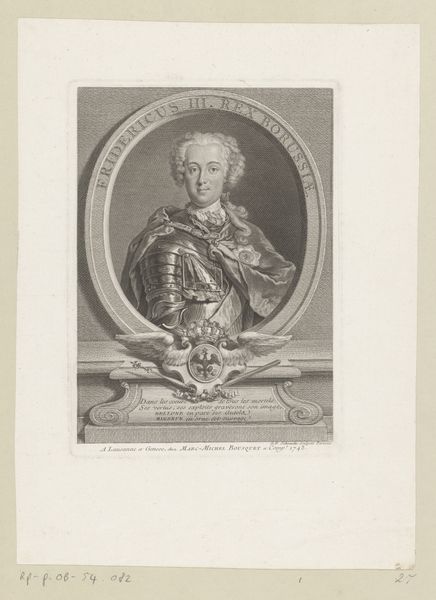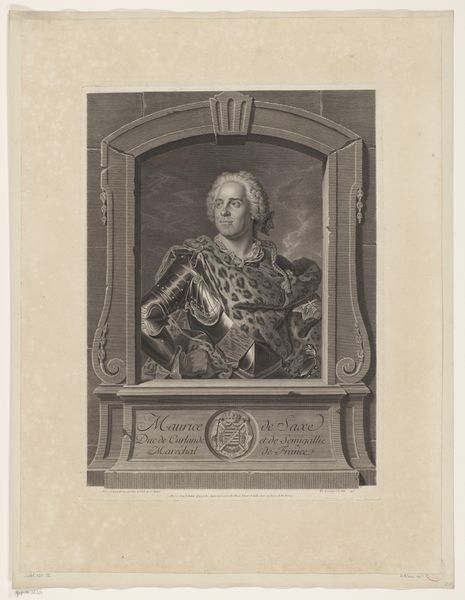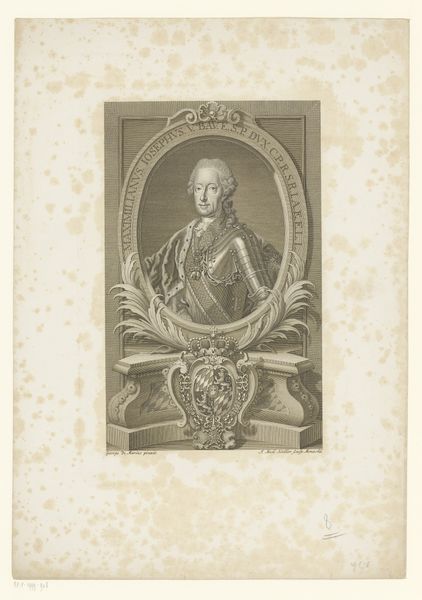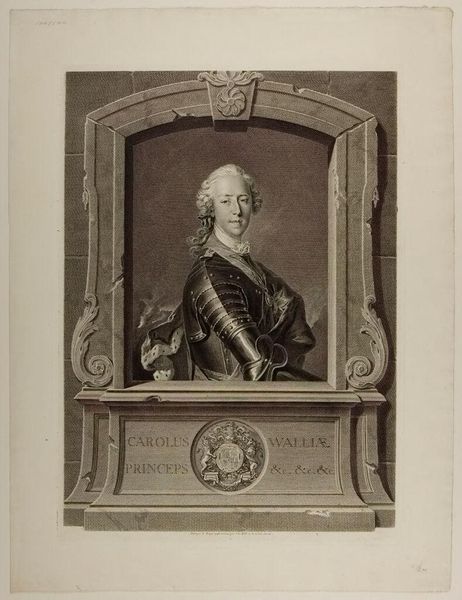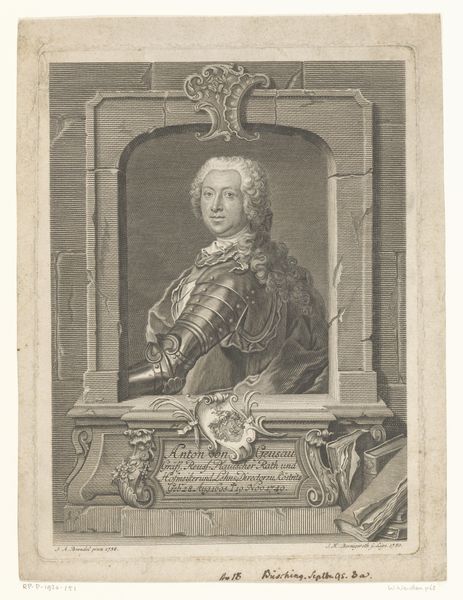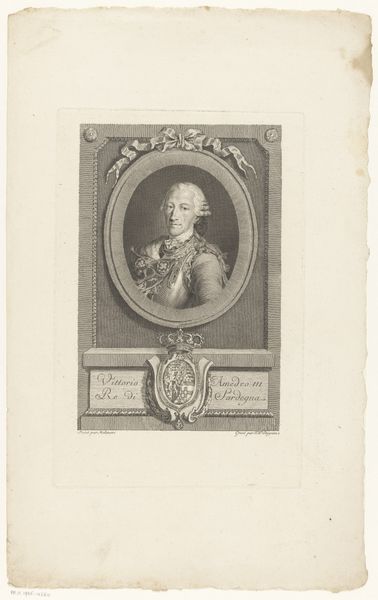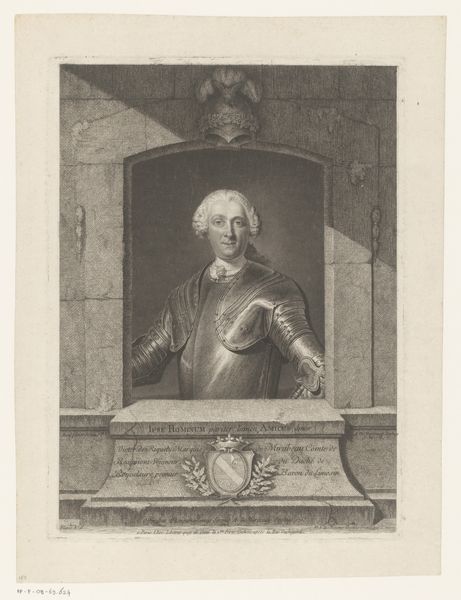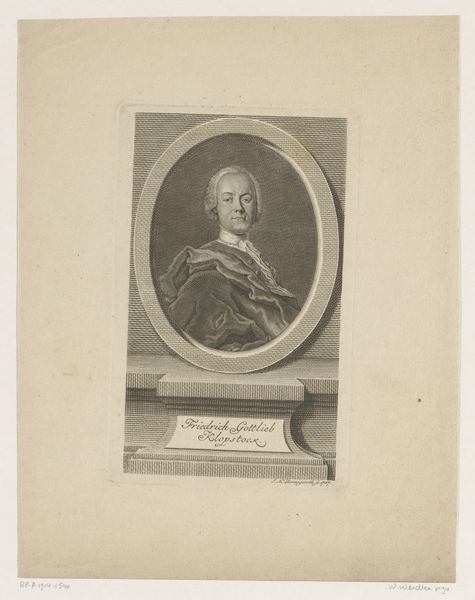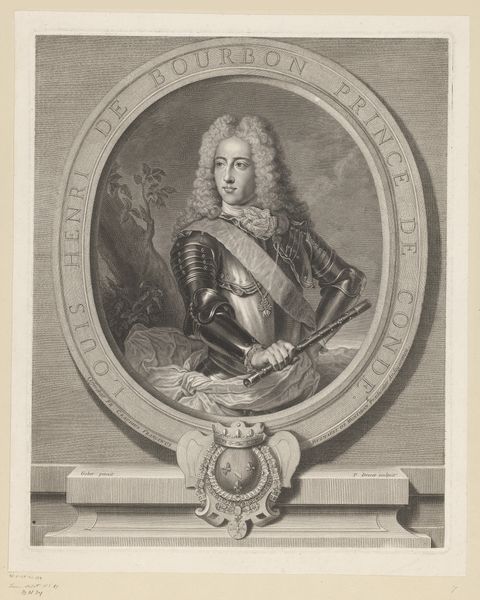
print, engraving
#
portrait
#
baroque
# print
#
history-painting
#
engraving
Dimensions: height 463 mm, width 335 mm
Copyright: Rijks Museum: Open Domain
Curator: Here we have Johann Georg Wille's 1748 engraving, "Portret van Karel Eduard Stuart," currently held in the Rijksmuseum collection. It's a compelling piece. Editor: It strikes me immediately as formal, yet somehow vulnerable. The subject, though presented in armor, has such soft, almost delicate features. It's an interesting contrast. Curator: Indeed. Wille's process involved meticulous engraving, demanding a high degree of skill in handling the tools and materials. The resulting fine lines give the impression of light reflecting off the polished armor and the soft skin of the subject. The production of such prints allowed for a wider distribution of images, reinforcing particular power structures of the period. Editor: Precisely! Karel Eduard Stuart, or Bonnie Prince Charlie, was a significant political figure. He presented himself as the rightful heir to the British throne. The print format itself is crucial. It speaks to the deliberate construction and dissemination of Stuart’s image, circulating a specific representation designed to bolster support for his cause and creating political imagery meant for public consumption. Curator: It’s a history painting, distilled through the reproducible medium of engraving. What tools and techniques do you think Wille used? The details in the lace are immaculate and must have been extremely time-consuming. Editor: The strategic display of heraldry and titles reinforce Stuart’s claim, legitimizing his position within the visual vocabulary of the Baroque. Notice also how the architectural framework isolates him, almost sanctifies him as if this image presents the viewer an icon to worship, which in many respects, the Jacobites did. Curator: Consider too the socio-economic aspect of art patronage during this era. These kinds of engravings were relatively accessible to a broader public. People invested not only monetarily in these objects, they also acquired a physical connection to political ideas, therefore creating an intriguing confluence of materials and ideology. Editor: A fascinating intersection, truly. The politics of imagery shaping its time. It's more than just portraiture. It represents the very construction of history and the politics of how individuals are elevated. Curator: Thinking about the labour required, it’s remarkable what was achieved through such manual processes. It causes us to reconsider the value and role of these prints within broader discussions of art and society. Editor: It's been eye-opening to delve deeper into these intersections of artistry, power, and production! Curator: Absolutely. These nuances enrich our understanding of this period and the material forces shaping both its aesthetic and political landscape.
Comments
No comments
Be the first to comment and join the conversation on the ultimate creative platform.
